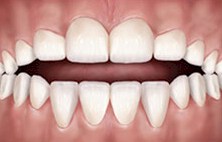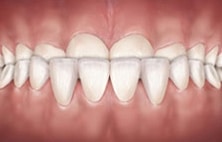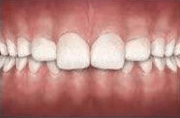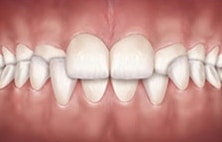The way in which a child’s bite develops is important, even at a young age. Despite the fact that your child’s primary teeth are only temporary, it’s still important to assess their growth starting at about the age of seven. This is the beginning of the timeframe in which permanent teeth start to erupt. During this time, it’s beneficial to have an evaluation conducted by Dr. Herrmann for the purpose of ensuring none of the primary or incoming teeth are out of alignment.
One of the responsibilities of an orthodontist during this timeframe is to determine if there are any problems with the way in which a child’s bite is positioned. The ideal situation is that from the age of six through eight, your child will receive their secondary teeth in a way that’s uniform and does not involve any gaps. Something else that you will need to watch for with the help of an orthodontist is whether any of the teeth are overcrowded.
Both gaps and overcrowded teeth should be addressed early on to prevent bigger and more costly issues. There are a variety of problems that you should look for when your child’s teeth are developing. Some of the most common issues are detailed below.
Misaligned Teeth

Sometimes teeth simply do not line up. When they are misaligned, it’s something that can affect both the maxillary (upper) and the mandibular (lower) teeth. By monitoring your child’s teeth, you can identify whether primary or secondary teeth are misaligned. Generally speaking, there’s a good chance that secondary teeth will be misaligned if primary teeth are. There different ways in which teeth can be improperly positioned. Sometimes there is a retrusion (receded back) and other times there is a protrusion (pushed forward).
Open Bite

Just as the term denotes, an open bite is when a person shuts their jaw, but their lower and upper teeth do not meet. In other words, there is no contact between the sets of teeth and there is no vertical overlap. There are different ways in which this can happen. Sometimes it’s because there was pressure from thumb sucking or because of tongue thrusting. When there is an open bite, the teeth often slant inwards.
Underbite

When an underbite exists, the lower and upper teeth are not aligned when the person’s mouth is shut. Specifically, when there’s an underbite, the lower teeth protrude further than the upper teeth. There are some conditions that are more drastic than others. Regardless of the severity, an underbite should be addressed.
Overbite

When someone has an overbite, you’ll notice a protrusion of the upper teeth beyond the lower teeth. Generally speaking, there’s a good chance that the maxillary incisors and canines will be positioned beyond the lower teeth.
Crossbite

When there’s a crossbite, it often affects both the maxillary and the mandibular. This is when teeth are not properly positioned and cross over each other. When this condition exists, the upper teeth will often be positioned inside of the lower teeth. Sometimes it’s difficult to keep teeth inside of the mouth when there’s a crossbite.
Monitoring your child’s teeth and how they develop is important because it can enable you to address the issue before it worsens. By visiting Rick Herrmann Orthodontics in Mansfield Texas, you can get an understanding of what’s happening and take the steps necessary for a resolution. It’s always best to receive a full examination to make sure you understand the problem and can achieve the best possible outcome.
